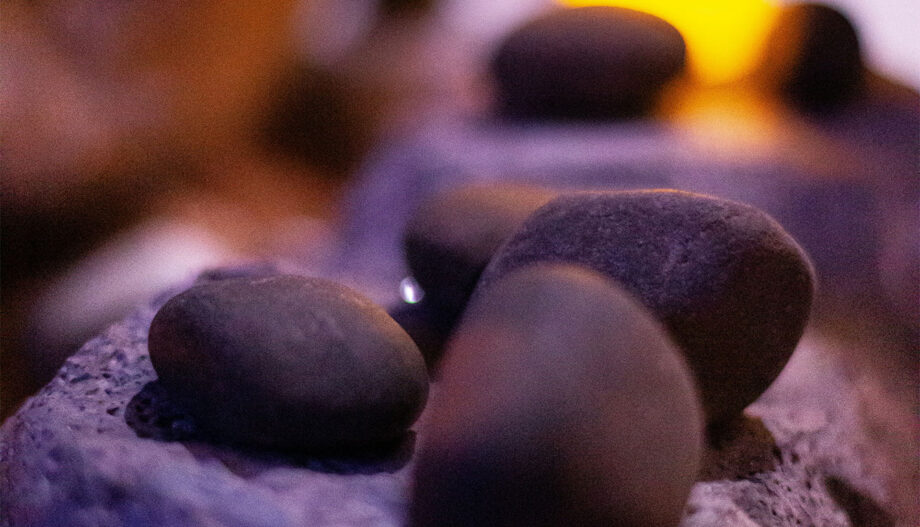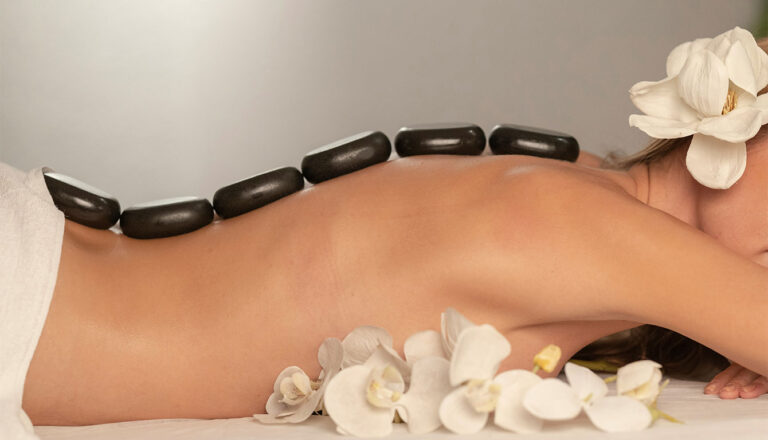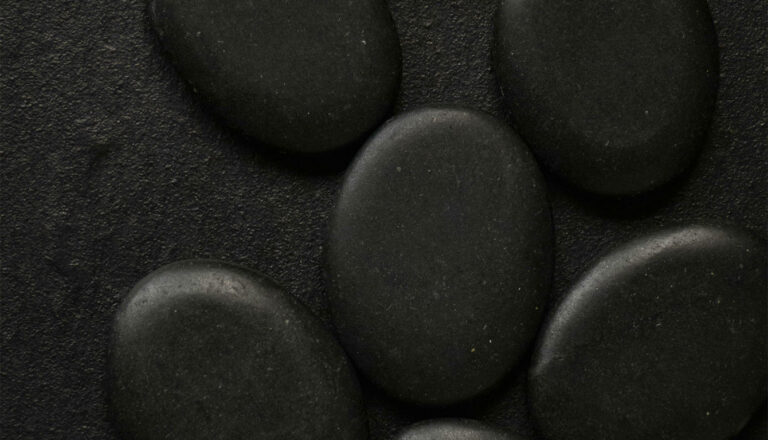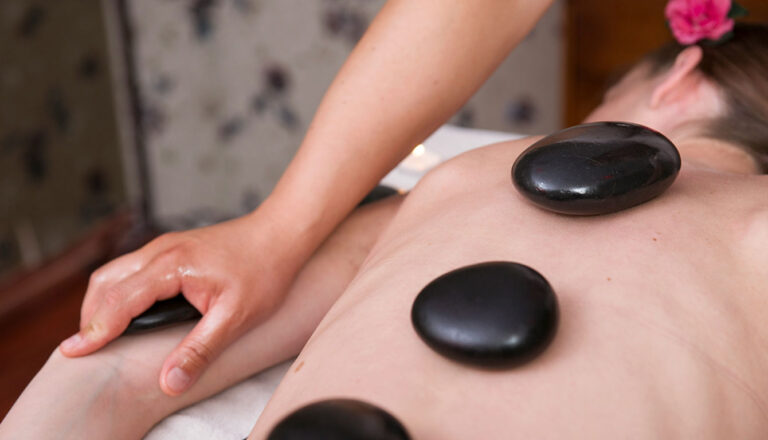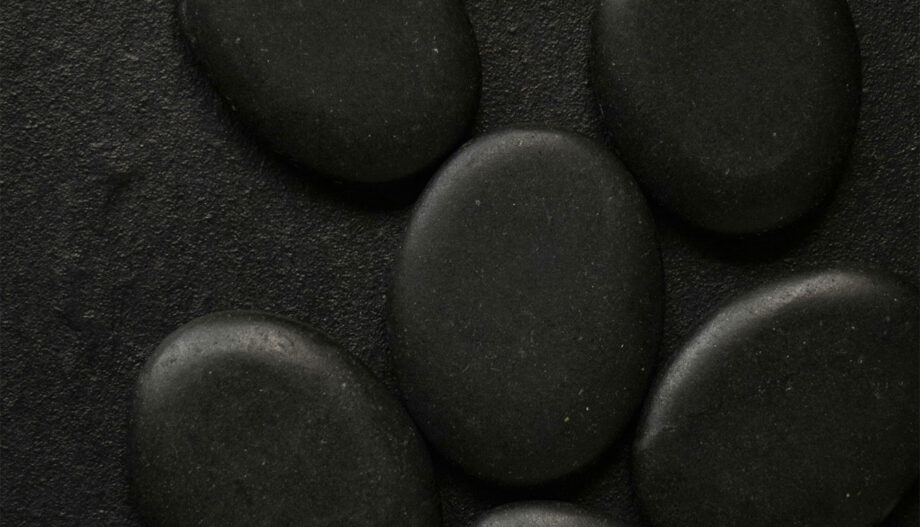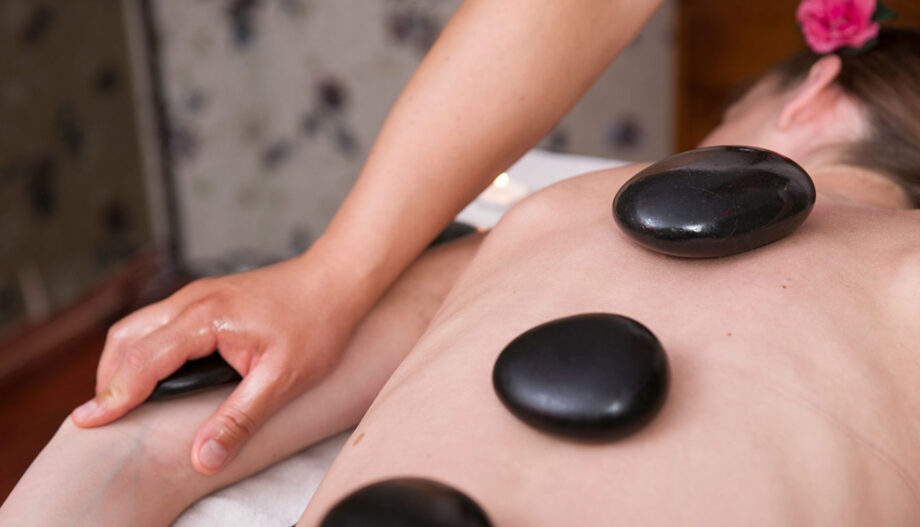This short guide sets a clear, step‑by‑step path for preparing and operating a professional stone unit. It explains the safe temperature band — about 45–50°C — and why even heating matters for client comfort and safety.
The piece shows why dedicated equipment beats improvised setups. Professional heaters keep stones within a steady range and cut burn risk. Choose between a 6‑litre portable bath for mobile work or an 18‑litre clinic unit for higher capacity and smoother workflow.
Safety starts early: skin barriers, ongoing chat with your client and checks with a calibrated thermometer before any placement. Practical tips cover stone loading, spacing, rotation during treatment, and hygienic shutdown at the end.
The aim is simple — deliver a repeatable method that gives steady warmth, smooth glides and confident handling. Read on and you will have everything need for reliable sessions every time.
Key Takeaways
- Keep stones at about 45–50°C for safe warmth and comfort.
- Professional units heat evenly and reduce the chance of overheating.
- Choose 6‑litre for portability or 18‑litre for clinic capacity.
- Always test temperature with a calibrated thermometer through a towel.
- Maintain clear communication and use skin barriers for client safety.
Hot stone massage at a glance: benefits, safety and today’s best practice
Even heating from a purpose-built unit makes for a calmer, safer client experience. Professional baths keep temperature steady and avoid the dry, uneven heat that cracks stones or creates hotspots.
Benefits: this treatment promotes deep relaxation, improves circulation and softens tissue, which sets the scene for more effective hands‑on work. Clients often report immediate comfort from consistent warmth.
Best practice calls for heating stones in water within a professional unit, checking temperatures with a calibrated thermometer and always placing a fabric barrier between stones and skin. Kitchen devices such as microwaves, ovens or towel warmers are discouraged.
- Choose basalt stones for reliable heat retention; vetted dense river stones are an alternative.
- Prepare a range of sizes to keep workflow smooth and reduce interruptions.
- Maintain strict temperature control to lower risk and protect clients.
| Aspect | Recommendation | Why it matters |
|---|---|---|
| Heating method | Professional water bath | Even warmth, fewer hotspots, longer stone life |
| Stone type | Basalt; dense river stones acceptable | Better heat retention and smooth surface for client comfort |
| Temperature check | Calibrated thermometer | Verifies safe working range and reduces burn risk |
| Skin protection | Fabric barrier | Reduces direct heat exposure and improves safety |
Safety first: temperatures, tools and client screening for heated stones
Controlled temperatures and simple protocols cut the risk of client discomfort. Keep the working range for stones at about 45–50°C. Confirm with a calibrated thermometer before each placement to ensure steady temperature control.
Ideal water and stone temperatures
Set the bath so heated stones sit reliably in the 45–50°C band. Check each stone and the water; if a stone feels too hot, return it to the bath and let it cool slightly.
Why a barrier matters
Never place a stone directly on bare skin. A towel or sheet reduces risk and cuts the chance of burns. Always test through fabric before positioning.
Client intake, contraindications and spacing
Complete intake forms. Screen for circulatory problems, autoimmune conditions and medications that change heat tolerance. Space heated sessions by at least six hours to avoid cumulative exposure, especially if clients use saunas.
Hydration and avoiding makeshift devices
Encourage drinking before, during and after treatment to support circulation and skin health. Avoid non‑professional gear such as a slow cooker, microwaves or ovens; these lack fine control and may create hotspots.
“Consistent temperature checks, barrier use and client feedback are the simplest safeguards for safe practice.”
| Area | Recommendation | Reason |
|---|---|---|
| Working range | 45–50°C | Safe warmth, reduced burns |
| Barrier | Towel or sheet | Protects skin surface |
| Screening | Full intake form | Identify contraindications |
| Session spacing | ≥6 hours | Avoid cumulative heat |
| Heating devices | Professional baths only | Even heat and temperature control |
For further reading on standards and evidence around hot stone massage, consult the linked guidance.
Selecting a professional stone heater and kit (and what to avoid)
A purpose-built water bath gives predictable warmth and easier cleaning for practitioners.
Professional stone bath units
Look for adjustable controls, an accurate display and clear temperature control. Units with wrap‑around elements offer even heating and reduce hotspots.
Removable reservoirs and lids speed cleaning and keep heat stable between rotations. Choose a 6‑litre compact unit for mobile work, or a larger bath for full‑body sets.
Methods to avoid
Avoid kitchen kit such as slow cooker, slow cookers, microwaves, ovens or towel cabbies. These devices lack precise control and can create dry heat that cracks stones or raises the risk of burns.
Stones that hold heat well
Basalt stones remain the best choice for heat retention and smoothness. Dense river stones may be acceptable if they are chip‑free and inspected before each session.
Build a kit with varied sizes, a calibrated thermometer, tongs and quality towels. Record model details and maintenance for consistent practice.
“Good equipment is the simplest safeguard against temperature spikes and uneven stones.”
| Feature | What to look for | Why it matters | Practical tip |
|---|---|---|---|
| Controls | Adjustable thermostat, clear display | Stable heat, predictable sessions | Check reading with a probe thermometer |
| Heating | Wrap‑around elements, even circulation | Fewer hotspots, longer stone life | Space stones for full immersion |
| Capacity | 6‑litre for mobile; larger for clinic | Matches workload and reduces handling | Choose based on typical body areas treated |
| Cleaning | Removable reservoir, lid | Hygiene and quick turnaround | Log service dates and clean after each use |
How to use a hot stone massage heater
Start by setting up on a stable, heat‑resistant surface and check the cable and plug. Seat the removable reservoir correctly and confirm the unit sits level. This step keeps electrical and water risks low.
Prepare the unit
Fill to the manufacturer’s mark with clean water. Verify your calibrated thermometer is ready. Preheat until water and stones stabilise in the safe working band.
Load and heat stones
Place stones so each is fully submerged and not stacked. This promotes even heating and stops hotspots. Keep a range of sizes easy to hand for efficient selection during the session.
Test before client placement
Swirl the water for uniform temperature, lift a stone with tongs or a slotted spoon, towel it dry and test through a folded towel against your forearm. Always confirm temperature before touching skin.
- Rotate working stones regularly and avoid letting any stone sit dry on hot surfaces.
- When adding cooler stones, introduce them slowly to prevent the unit from overshooting the set point.
- Keep a staging towel near the couch for brief rests and tidy handling.
Shutdown and hygiene: Switch off, allow the bath to cool, empty and clean the reservoir. Wash and dry stones thoroughly and store in a dry, labelled kit ready for the next client.
“Full immersion, careful testing through a barrier and steady control are the simplest safeguards against risk burns.”
Technique tips that enhance comfort and reduce risk
Small, steady moves keep warmth comfortable and reduce risk during each pass. Adopt flowing contact rather than leaving items in one place for long.
Glide, don’t park: Keep stones moving in gentle, oiled glides and check client feedback often. If any area feels intense, swap the item and shorten contact time.
Match sizes and shapes to body areas
Pair larger, flat pieces with broad zones like the back and thighs. Palm‑sized stones suit forearms and calves, while small, precision stones help shoulders, feet and contours.
Basalt preference: Choose basalt stones for steady heat retention and smoothness. If using river stones, pick dense, chip‑free specimens and inspect them each session.
Prevent dry‑heat damage and uneven temperatures
Avoid dry heating methods that crack or warp stones. Recondition stones in the water bath between passes so temperature stays consistent and predictable.
- Maintain rhythm: alternate hands and stones to prevent over‑warming any single spot.
- Use light-to-moderate pressure near bones and sensitive areas; let warmth do the work.
- Sequence work: warm-up glides, slightly cooler deeper strokes, then calming finishes.
- Treat feedback as data; if a client notes excess warmth, change stones immediately.
“Keep motion gentle and check in — simple steps that protect comfort and improve the overall experience.”
Troubleshooting and professional pointers for UK therapists
When warmth becomes uneven, practical steps restore steady conditions and reduce risk. Start by checking the unit display and confirming the reading with a calibrated thermometer through a towel.
Common temperature issues: hotspots, uneven heating and corrections
If you spot hotspots, stir the water and spread stones so each is fully submerged. Allow a few minutes for readings to settle before placing any stone near skin.
Return cooler stones gradually rather than making large control jumps. This reduces overshoots and lowers the chance of burns.
Clinic versus mobile: capacity choices for workload
Choose a 6‑litre bath for mobile therapists or targeted work. Larger baths suit clinics that run full‑body sets and want fewer interruptions.
Professional stone heaters offer more reliable temperature control and even heating than kitchen devices such as slow cookers or towel cabbies, which can raise legal and safety concerns.
Documentation and insurance: notes, consent and standards
Keep detailed intake notes, written informed consent for heat exposure, and record any adjustments during sessions. This supports good practice and reduces risk in case of queries.
Check that your public liability cover includes hot stone services and follow manufacturer guidance for the unit at all times.
“Small checks, clear records and correct equipment are the simplest safeguards for client safety.”
- Stir bath and redistribute stones when uneven warmth appears.
- Verify temperature with a calibrated thermometer before client contact.
- Match capacity to your workload: 6‑litre for mobile; larger for clinics.
- Document intake, consent and any in-session changes; confirm insurance covers this work.
| Issue | Quick fix | Why it matters | When to escalate |
|---|---|---|---|
| Hotspot on one stone | Stir water, re‑space stones | Restores even heating and comfort | If persists after 5–10 minutes |
| Unit overshoots | Return cool stones slowly; small control adjustments | Prevents temperature spikes and burns | If thermostat fails or reads erratically |
| Insufficient capacity | Upgrade to larger bath for full sets | Reduces handling and session interruptions | When workflow slows or client comfort drops |
| Equipment concern | Follow manual; contact supplier | Maintains safety and warranty | If leak, electrical fault or unusual smell occurs |
Conclusion
Precision in temperature, kit care and client checks turns good sessions into reliable ones. Keep hot stones around 45–50°C and confirm readings with a calibrated thermometer through a folded towel; this protects skin and preserves trust.
Always place a fabric barrier before any contact. Heat only in a professional water bath; avoid slow cooker or dry‑heat options. Select basalt stones and inspect them so stones heated remain smooth and safe.
Match stone heaters’ capacity with your setting, rotate massage stones during work and record consent plus aftercare notes. Ask clients for feedback, then adapt timing and pressure as needed.
Quick checklist: fill, set, verify, test through towel, glide not park, rotate, note, clean. When temperature, barrier and pacing are controlled, you deliver a confident hot stone massage clients seek again.
FAQ
What temperature should stones and water be set at for safe treatments?
Aim for stone and water temperatures around 45–50°C. Verify with a calibrated thermometer and let the unit stabilise before placing stones in contact with skin. Maintain a barrier such as a towel or sheet and perform a skin test through that barrier to avoid burns.
Which heating methods are acceptable and which should I avoid?
Use a professional stone bath unit with adjustable controls and even heating. Avoid slow cookers, microwaves, ovens, air fryers, towel cabbies and pans — these methods give uneven heat and raise burn and liability risk.
How should stones be loaded and arranged in the heater?
Fully immerse clean basalt or dense river stones with space between each for even circulation. Don’t overcrowd the reservoir; allow stones to heat evenly and sit for the recommended preheat time set by the manufacturer.
What are the essentials of preparing the unit before a session?
Position the unit on a stable, heat‑resistant surface, check electrical leads and RCDs, assemble the water reservoir and fill with clean water. Place a food‑safe thermometer if needed and allow the unit to reach a steady temperature before loading stones.
How do I test stones before placing them on a client?
Lift a stone with tongs or a spoon, wipe it dry with a towel and perform a skin test through a towel or sheet on your own forearm. Move the stone gently across the barrier to confirm comfortable warmth rather than intense heat.
What precautions reduce the risk of client burns?
Use barriers, monitor temperatures frequently, rotate stones instead of leaving them stationary, and keep a close dialogue with the client. Screen for contraindications such as neuropathy, diabetes, recent surgery or thin skin, and avoid heated work over those areas.
How should cooler stones be managed during a treatment?
Return cooler stones to the bath for reheat rather than attempting rapid top‑ups that spike temperatures. Maintain steady bath temperature and swap stones in rotation to preserve even warmth for the client.
Which stone types perform best for heat retention?
Basalt stones are preferred for their density and heat retention. Some dense river stones may be acceptable if they are smooth, non‑porous and free of fractures. Avoid porous or cracked stones that hold water or break under thermal stress.
What cleaning and shutdown routine should therapists follow?
After treatment, power down and allow stones to cool. Empty and clean the reservoir with a suitable disinfectant, rinse thoroughly, dry stones and unit parts completely, and store stones in a dry, ventilated container to prevent mould and odour.
How often should temperature be monitored during use?
Check the bath temperature at least every 15–20 minutes during a busy session and before placing any stone on a client. Use a calibrated thermometer and monitor for hotspots or uneven readings that indicate uneven heating.
What documentation and consent are recommended for professional practice?
Keep detailed client intake notes, record contraindications, obtain written informed consent for heated work, and document temperature settings and any adverse reactions. These measures support safety and meet insurance requirements.
Which unit size is suitable for clinic versus mobile work?
Clinic therapists often choose 6‑litre or larger professional units for higher throughput and stable heat. Mobile therapists may prefer smaller, well‑insulated units that meet capacity needs while remaining portable.
How should therapists address uneven heating or hotspots?
Redistribute stones, avoid overcrowding, verify the thermostat and controller settings, and contact the manufacturer for service if hotspots persist. Regular descaling and cleaning help maintain even heat transfer.
What client aftercare supports circulation and skin health?
Encourage hydration before and after treatment, advise gentle movement and rest, and recommend moisturising if appropriate. Watch for delayed redness or sensitivity and provide clear guidance on when to seek medical advice.
Can I use household devices like slow cookers or microwaves for professional work?
No. Household devices give unpredictable temperatures and poor heat distribution, increasing the risk of burns and insurance complications. Always use dedicated professional stone heaters designed for therapy environments.
